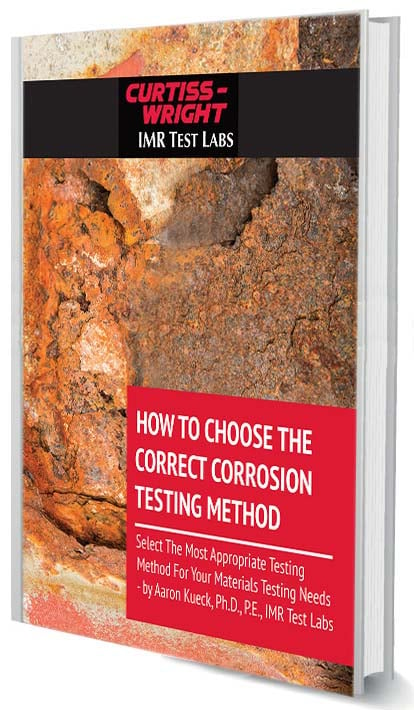Corrosion risks can be largely mitigated through proper raw material and protective coating testing before incorporating them into your product's design and manufacturing processes.
.jpeg)
When designing a metal component, engineers have to consider how susceptible certain alloys are to corrosion in the product’s final design.
In a recent study by NACE (National Association of Corrosion Engineers), it was estimated that the direct and indirect costs of corrosion in the United States is approximately 6.2% of the GDP. In 2016, that cost exceeded $1 trillion dollars for the first time.
While a range of corrosion types can aff ect your operation’s metal components, the specific varieties that pose a risk to your parts are dictated by your particular application and the corrosive threats within your operation. Here's a sampling of different corrosion types:
-
Uniform or General Corrosion
While this type of corrosion is the most common, it is also the most preventable. Uniform corrosion occurs when widespread exposure to weather, chemicals, or other elements causes corrosion across the entirety of an exposed metal surface. The rate of corrosion is an important factor in selecting materials, but on occasion a manufacturer expects corrosion levels to be tolerable as opposed to preventable. -
High-Temperature Corrosion
Exposure to corrosive substances at high temperature in machines that experience combustion – furnaces or engines, for example – causes corrosion in specifi c types of metals that would normally be considered corrosion resistant. -
Local Corrosion
Local corrosion occurs in a specifi c area of the metal where corrosion protection fails or is improperly applied – such as a crevice or hole – and threatens the integrity of the entire metal surface. This type of corrosion is sometimes diffi cult to detect until a component fails, making it especially dangerous. “Pitting” can occur even without an application failure of corrosion protectants. Its somewhat random and nonlinear corrosion patterns make it a very dangerous aff ectation, especially for alloys like 300 series stainless steel. -
Alloy Corrosion
When corrosive elements target one component of an alloy, it is referred to as de-alloying. Alloys are created to provide specific properties and corroding one portion of the material destabilizes the entire metal component. -
Galvanic Corrosion
When two distinct types of metal come into contact, one will act as the cathode while the other acts as the anode. This electrochemical reaction causes the anodic metal to corrode faster than normal. -
Environmentally Assisted Cracking (EAC)
Includes stress corrosion cracking (SCC), caustic cracking, environmental stress cracking (ESC), hydrogen cracking, and other subtypes of stress-environment interactions. Corrosion can occur due to a wide variety of environmental factors during original machining processes and exposure during operation. Stress, chemical exposure, pressure, vibrations, welding, machining, and a long list of other factors can interact with service environments and cause or accelerate problematic cracking and damage. -
Flow-Assisted Corrosion or Erosion-Corrosion
When surface protection (sometimes including protective scale) is eroded away by the fl ow of water or air, fresh metal becomes exposed to environmental factors and begins to corrode. Corrosion products are often less wear resistant, leading to increased erosion. This cycle is self-propagating and can rapidly degrade components. -
Fretting Corrosion
Most common in industrial machine components that experience intense and repeatable operation, fretting happens when surfaces wear down from constant friction caused by vibrations or rubbing.
Have more questions? Contact us for questions, or download our free eBook and learn about alternatives for corrosion testing.


